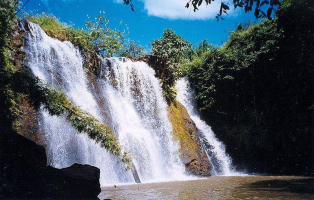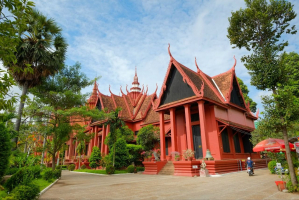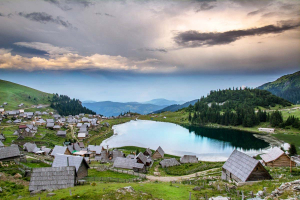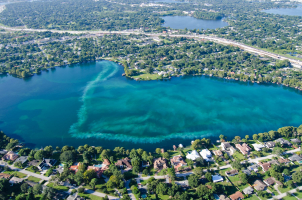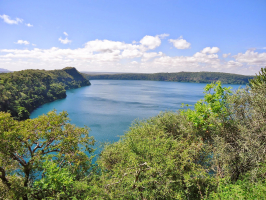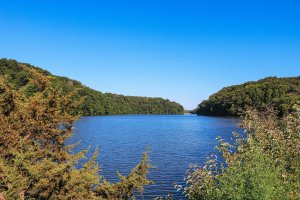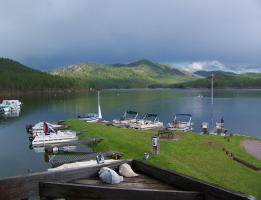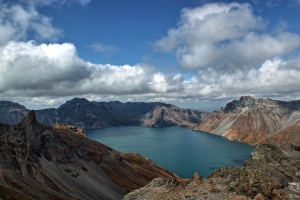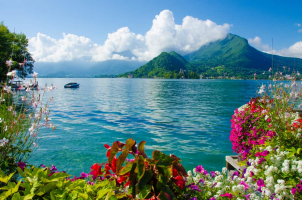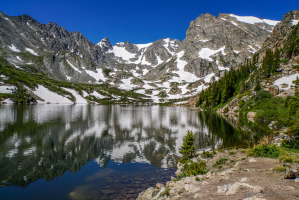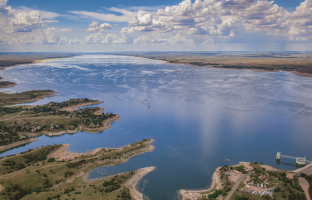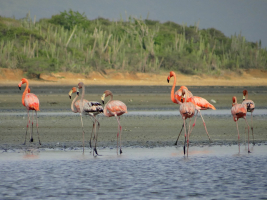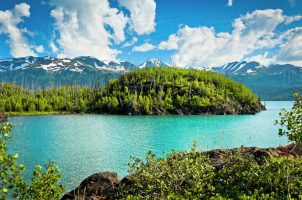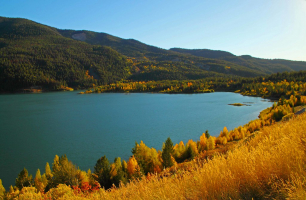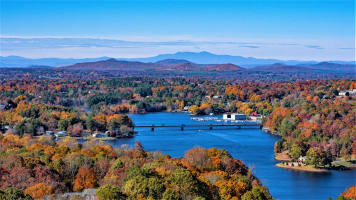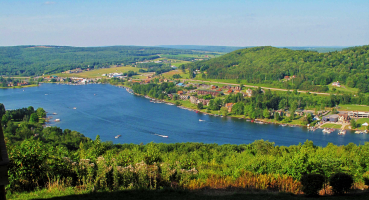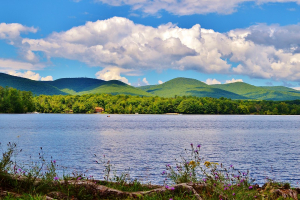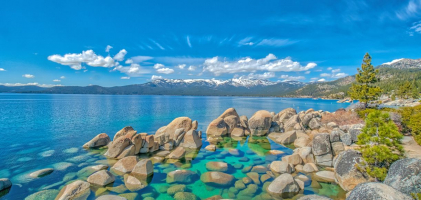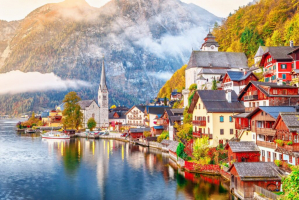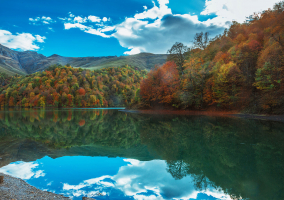Top 4 Best Lakes to Visit in Cambodia
The majestic mirrored waters, surrounded by nature and the countryside, provide a calming effect in some way. The stunning scenery of the Cambodian lakes ... read more...creates fantastic vistas and a wealth of historical significance. The best lakes in Cambodia are a must-see for everyone who enjoys the outdoors or wants to experience the elegant beauty and serene ambiance. Without further ado, check out the best lakes to visit in Cambodia.
-
The Yeak Laom Lake Shores form a near-perfect circle. Despite its tiny radius, the lake is only around 160 feet (48 meters) deep. Its volcanic origins account for its shape and depth.
A volcanic explosion 4,000 years ago is thought to have created a crater that filled with water over time. The lake was previously bordered by thick forest on all sides, but just a thin layer exists today, with the majority of the land farmed.
If you visit Yeak Laom during or just after the rainy season, the waters are beautifully clear and show out sharply against the vivid green backdrop. Wild pigs and exotic birds like butterflies can occasionally be seen.
Even though the lake is revered by the locals, both locals and visitors frequently swim or play in the water there. To make access easier, wooden docks with steps have been constructed. In order to better safeguard the ecosystem, formal processes were launched in 2018 to register Yeak Laom and the surrounding territory as state land. Other safeguards for the lake prohibit the use of detergents, gambling, or argumentative behavior while in the water.The lake is surrounded by five communities. The lake's 1.5-mile (2.5-kilometer) shoreline is surrounded by a network of pathways and wooden planks. Along the way, there is a small visitor center with lake information and handicrafts for sale.
You should be aware of this before you travel. Yeak Laom lies around three miles (five kilometers) from Banlung, the provincial capital of Ratanakiri, and is suitable for a bike trip. This location is also easily accessible by taxis or motorcycles. During the Second Indochina War, Ratanakiri was frequently attacked, and unexploded ordnance is periodically discovered in the area. Going off the (actual) beaten road may not be the best decision in this case.
Location: Yeak Laom Commune, Banlung Municipality, Ratanakiri Province, north-eastern Cambodia
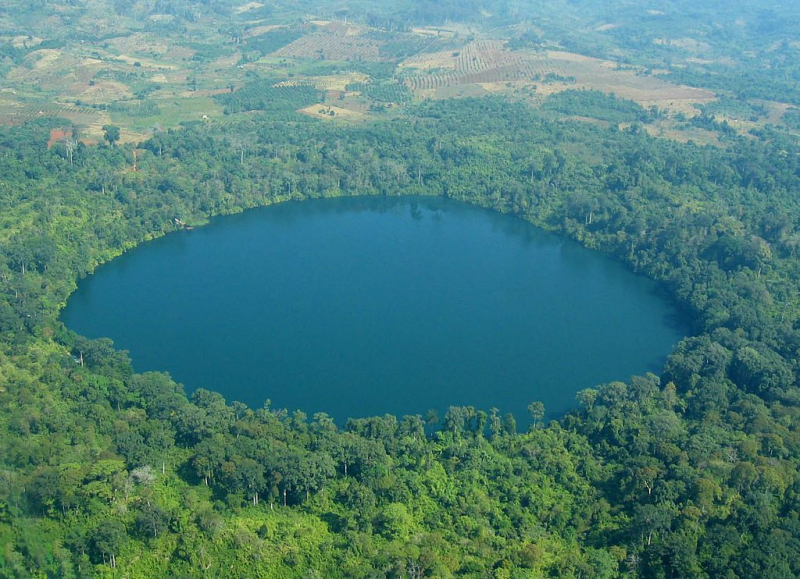
Lake Yeak Laom - Wikipedia 
Panorama of Yak Loum Lake-Ratanakiri, Cambodia - Barang/ Wikimedia Commons -
The lake near the Banteay Kdei temple was erected by King Jayavarman VII. If you're looking for a place to rest, the exquisite landing terrace, refurbished by King Jayavarman VII, is a lovely spot to take in the surrounding plain and vegetation. Srah Srang, built in the tenth century, is both an archaeological monument and a royal bathing facility. The lake is renowned for being a fantastic place to observe the sunset and Angkor Park. The sun sets over the lake on the lake's bedsits of lion statues that overlook the enormous lake as evening falls. You can also enjoy the livestock grazing spot by the lake banks on occasion.
A ‘floating’ temple used to exist on this reservoir, but all that remains are the sculptural serpents that guard the shore. During the day, there’s little to see, but in the long balmy evenings, local youngsters gather at the water’s edge to watch the sunset blaze and glitter on the water.
Srah Srang is a lesser-known tourist spot that is ideal for anyone wishing to escape the hustle and bustle of the city and enjoy a calm sunrise or sunset away from the masses.
Take in the breathtaking scenery while marveling at the archaeological complex of the structure. If you visit during the dry season, you might be able to spot the ruins of an ancient temple dedicated to the Kama, also known as the temple of love, in the pool's middle.
Location: South of the East Baray and east of Banteay Kdei, Angkor, Cambodia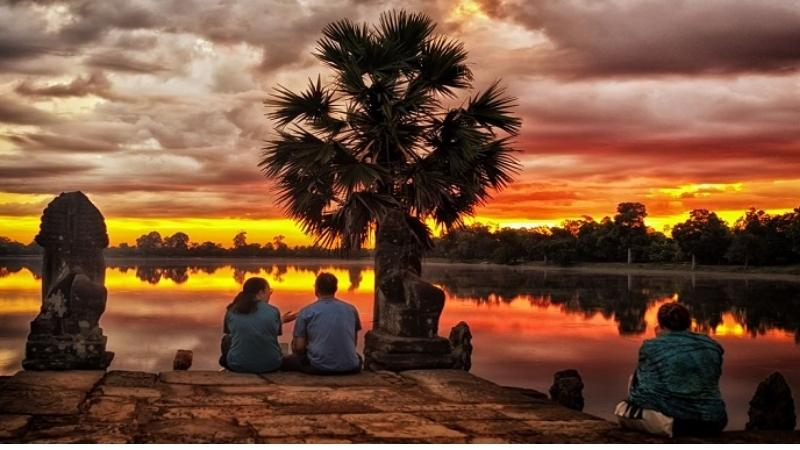
Tourists enjoy the sunset at Srah Srang Lake - bestpricetravel.com 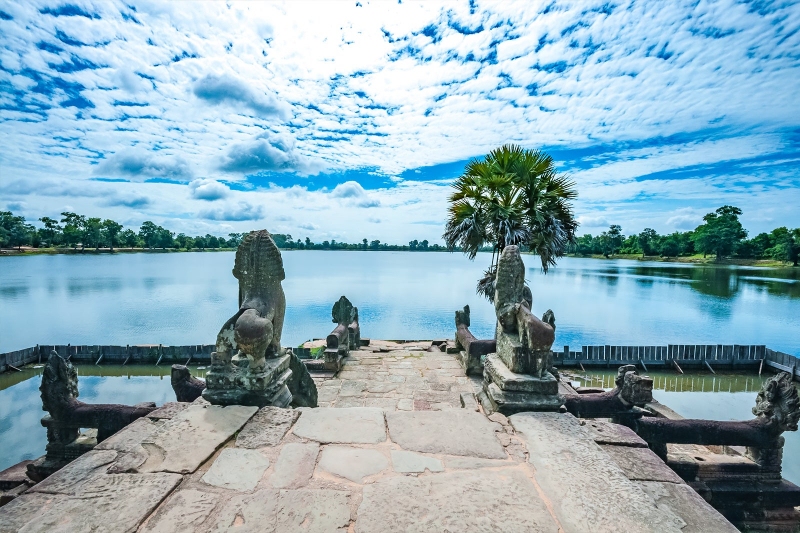
Srah Srang - Ancient Reservoir and Temple Near Siem Reap - Hotels.com -
Five provinces encircled Tonle Sap Lake, and more than three million people lived along its banks, with 90% of them earning a living from fishing and agriculture. As shown on the map of Cambodia, it stretches over the country's northwest corner.
The Lake is South East Asia's largest freshwater body. The monsoon and dry seasons have an impact on its size. The lake expands to a surface area of 10,000 square kilometers when it is filled with water from the Mekong during the rainy season, which lasts from June to October. Its area is 3,000 square kilometers, it has a two-meter depth, and water flows out from the lake to the Mekong. This natural phenomenon occurs between November and May during the dry season. The optimum habitat for all types of fishes to spawn and raise their young is the flooded forest that encircles the lake's shore. This lake is home to a wide range of biodiversity, including over 300 kinds of freshwater fish, as well as snakes, crocodiles, tortoises, turtles, and otters. There are about 100 different types of aquatic birds, including storks, pelicans, and others.
The Lake is also a valuable commercial resource, supplying more than half of Cambodia's fish consumption. In keeping with the specialized ecosystems, the human occupations on the lake's edges are also distinctive - floating villages, towering stilted houses, massive fish traps, and an economy and way of life that is deeply intertwined with the lake, the fish, the wildlife, and the rising and falling water cycles.
You can go from Siem Reap to Phnom Penh by express boat, which will traverse the lake and land at the village of Chong Khneas, which is located about 15 km south of Siem Reap. Although it just takes six hours, we might advise against taking this trip during monsoon season. Because the water level is low during the dry season, sometimes boats become trapped in mud. Depending on your interests and available time, there are a variety of ways to experience the local wildlife and culture.
Chong Khneas is the name of a well-known floating town on the lake's edge. It is located about 15 kilometers south of Siem Reap town and takes about 30 minutes by automobile to the boat pier, where there are always boats ready for visitors. The boat ride through the floating village lasts about two hours. You will visit Khmer, Muslim, and Vietnamese floating residences, as well as floating markets, fisheries, clinics, schools, a basketball court, a pigsty, and other tourist boats.
Chong Khneas was formerly quite intriguing, but now that it is owned by a private company, the prices have gone up and the neighborhood has a more commercial appearance. Two stops are typically made during the boat trip: the first is at a touristy floating "fish and bird exhibition" with a gift and snack shop, and the second is at the highly recommended Gecko Environment Centre, which provides displays and information on the ecology and biodiversity of the lake area.
Location: About 15 km south of Siem Reap town, Lower Mekong Basin, northwest of Cambodia
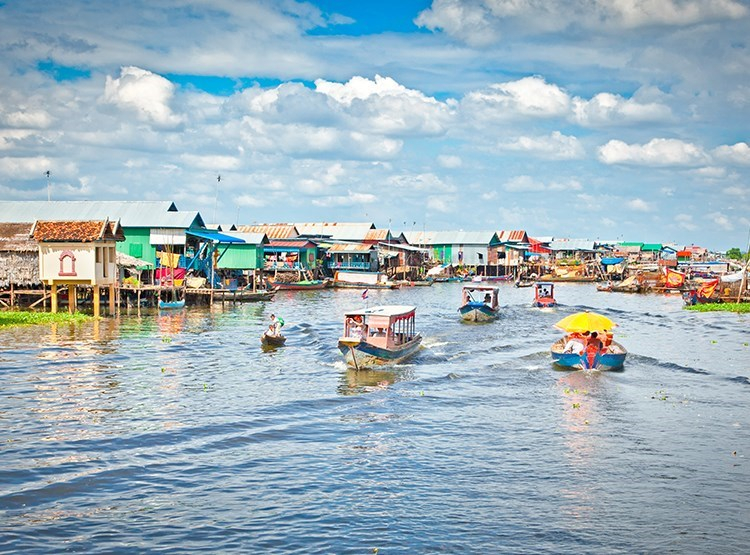
Floating village at Tonle Sap Lake - AmaWaterways 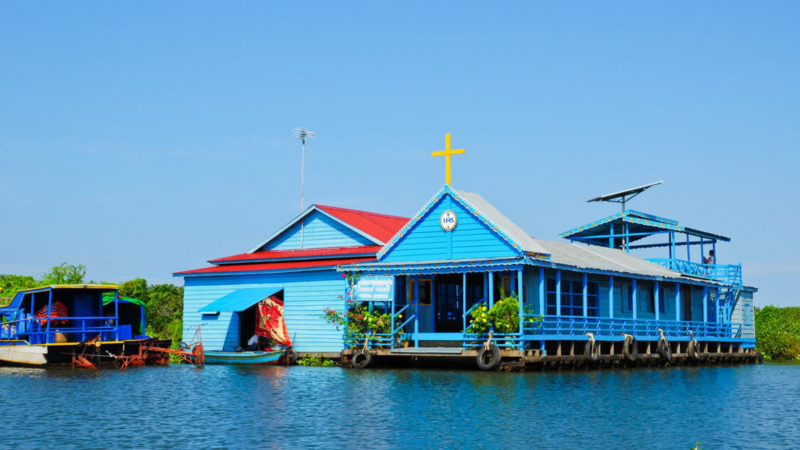
Tonle Sap Lake - Blanc Smith Residence -
Another one on the list of the best lakes to visit in Cambodia is West Baray. It is a big reservoir built by the Khmer Empire that is about 23 minutes from Angkor Wat. West Baray Lake is a large manmade lake that supplies water to the majority of the city and is a popular area for inhabitants to spend their leisure time. West Baray Lake is an excellent location for travelers to interact with locals and gain a genuine experience.
During the dry season, tourists can visit a small island in the reservoir that houses an architectural site of ancient temple ruins. We recommend taking a horseback ride across the waves to the temple since it is an unforgettable experience that you will remember for the rest of your life.
Additionally, West Baray offers a wide variety of other stunning activities and sights. By the beach, there are cabins where guests can relax and swim. They also provide food and beverages. West Baray Lake is the second most frequented location in the Siem Reap area after Tonle Sap.
Location: West of the walled city Angkor Thom, Angkor, Cambodia
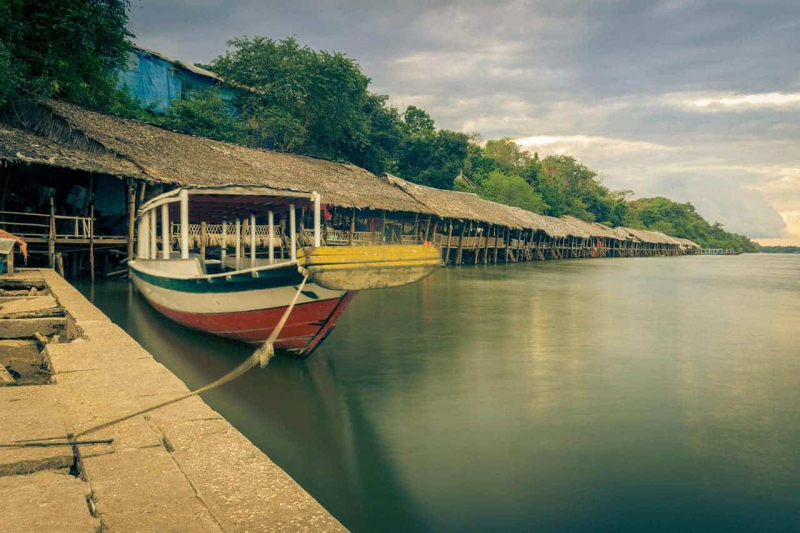
West Baray Reservoir - Baray Teuk Thla - Just Siem Reap 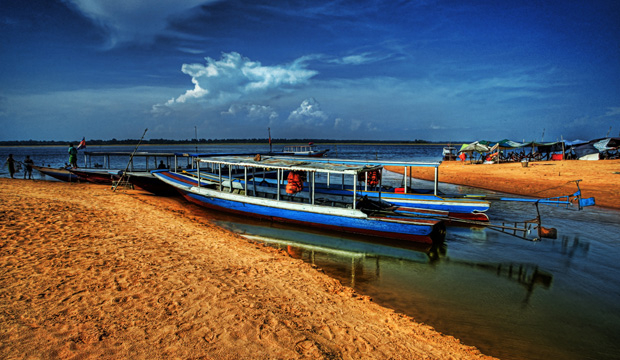
West Baray Lake - Angkor Paradise Hotel






